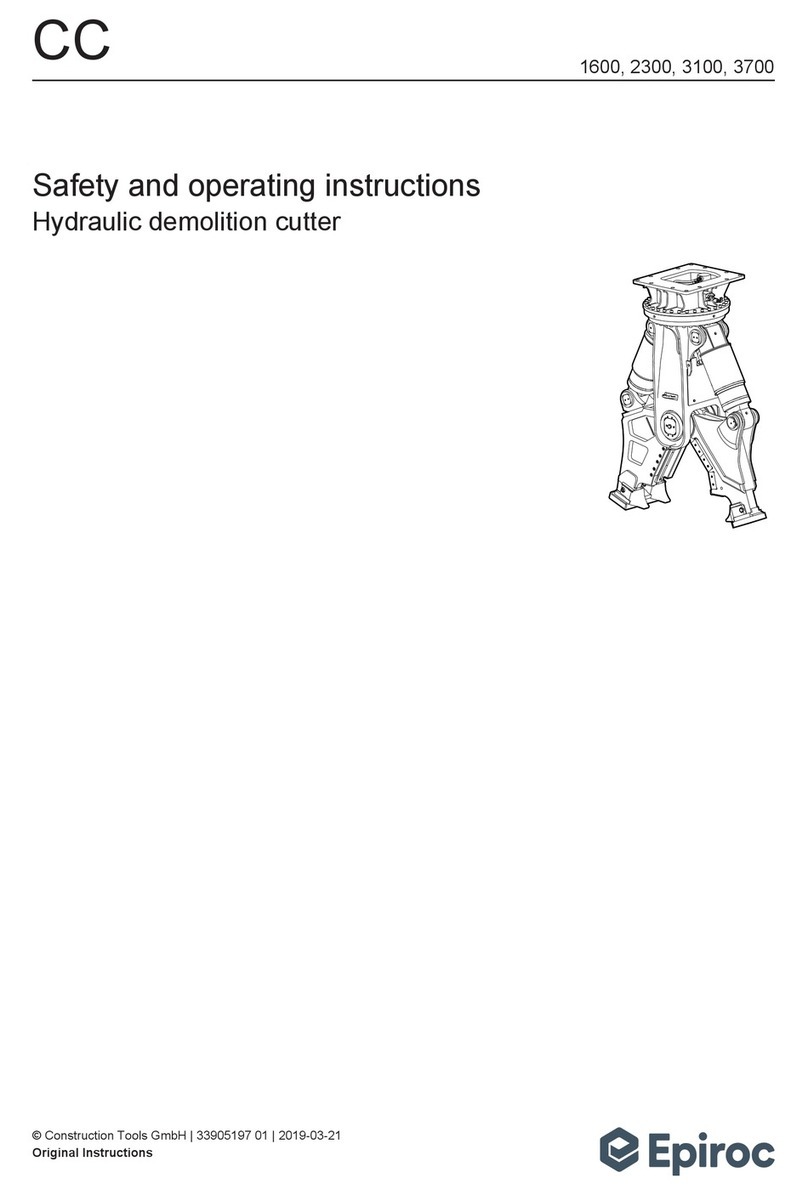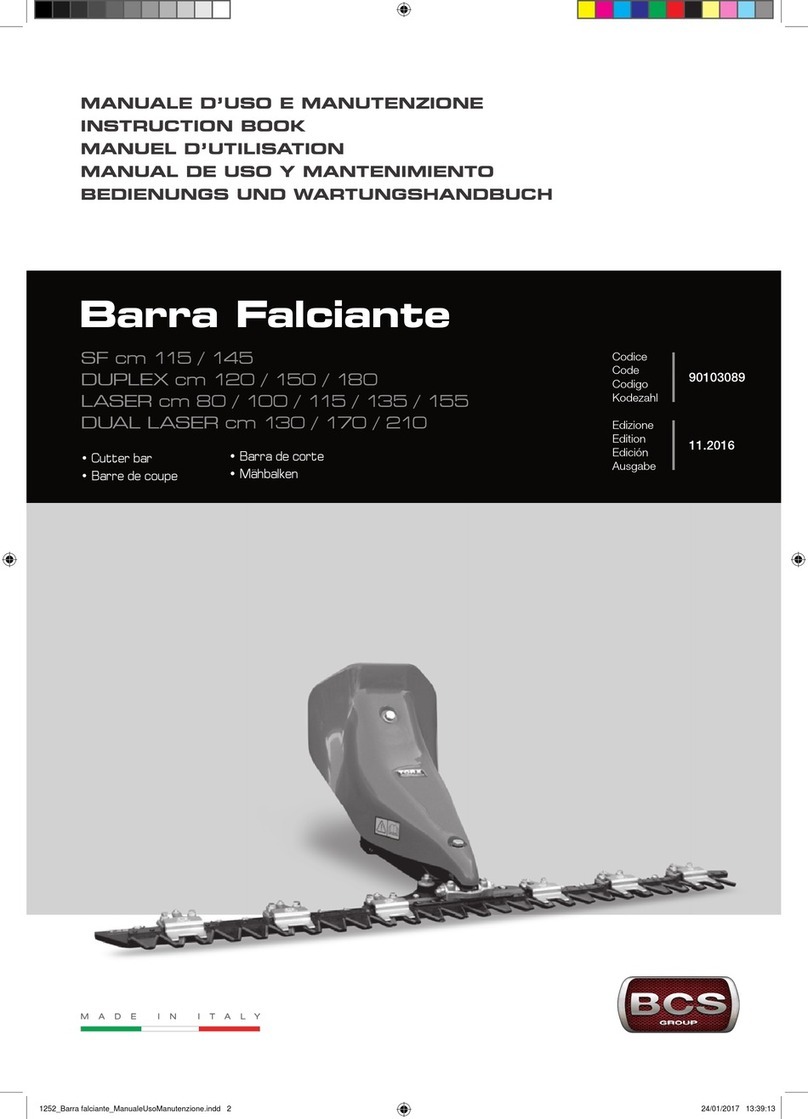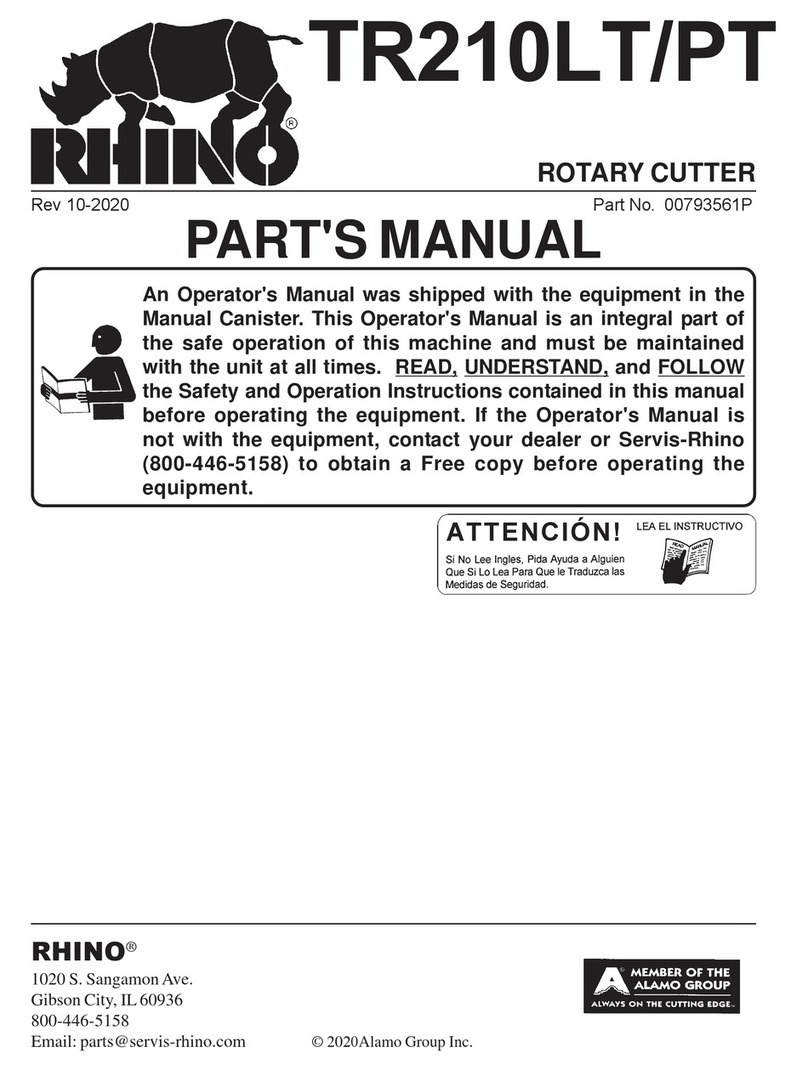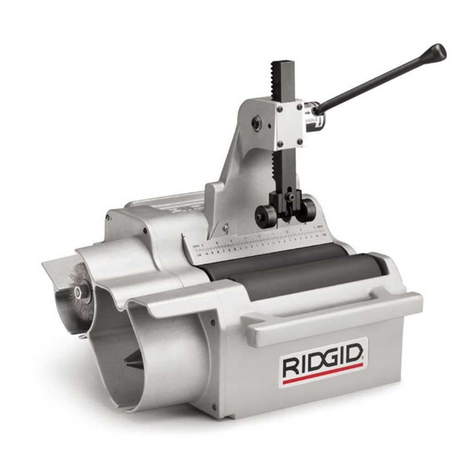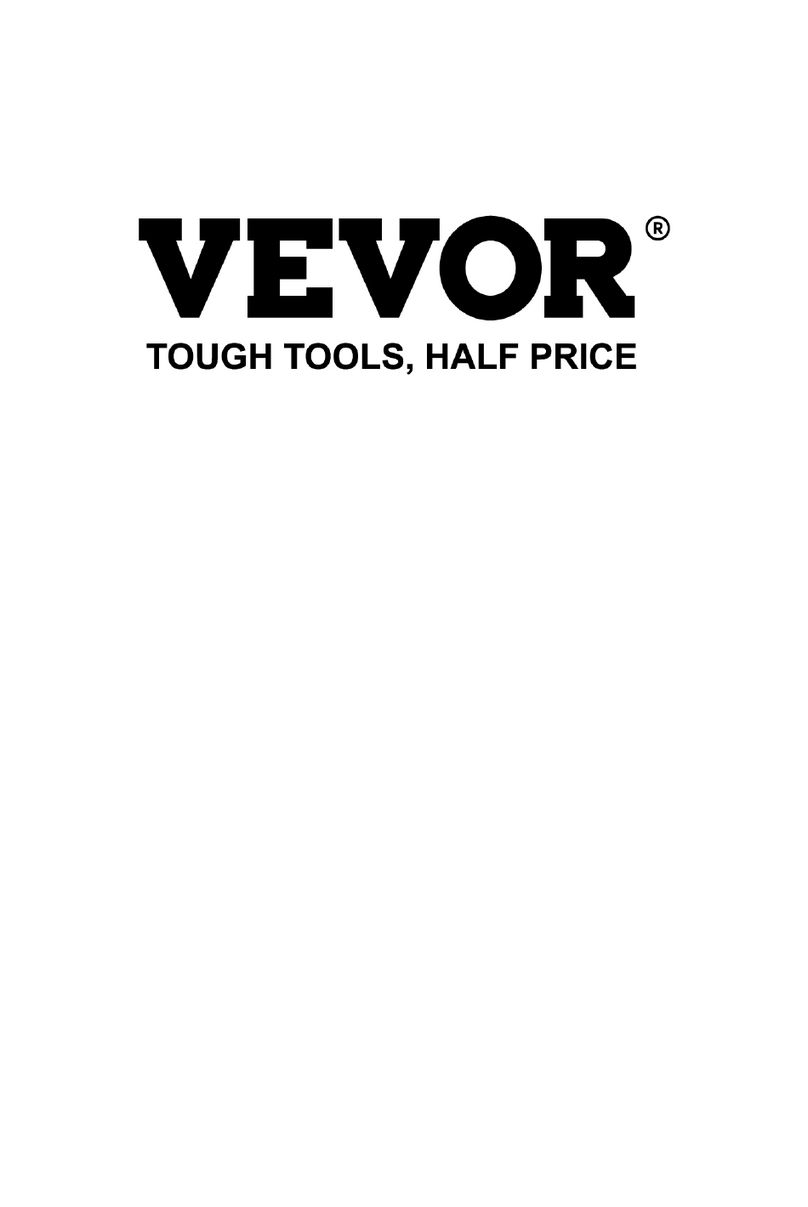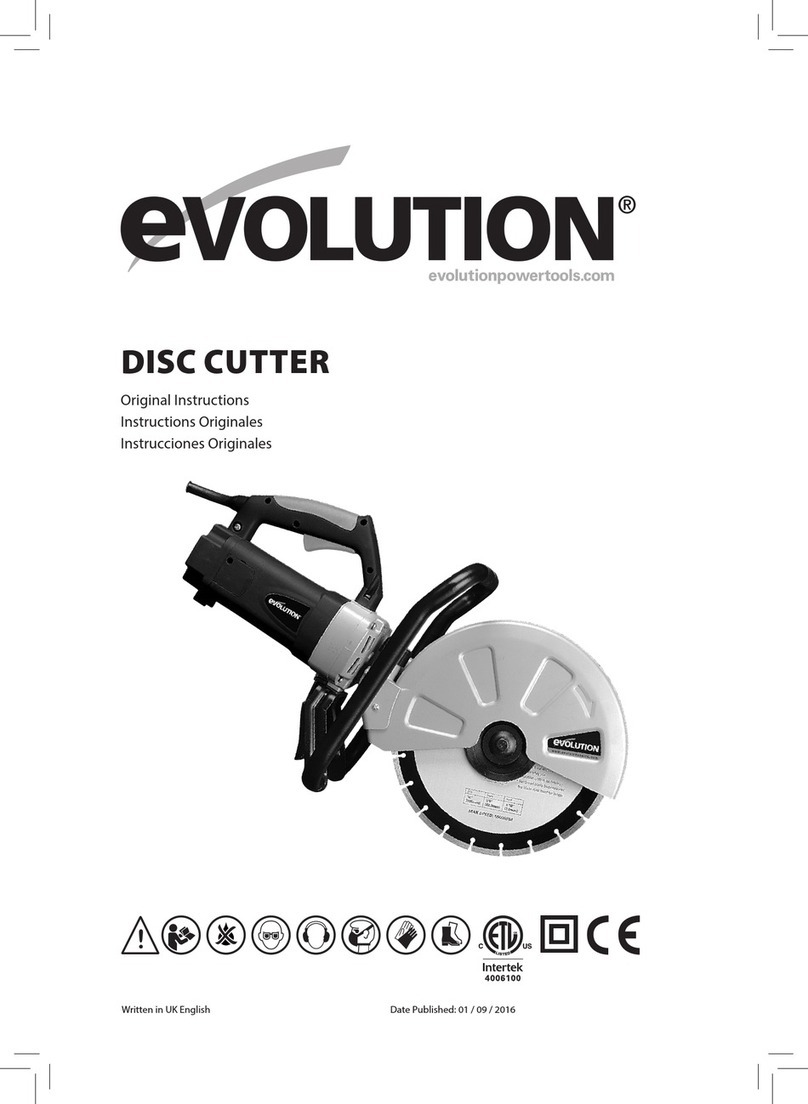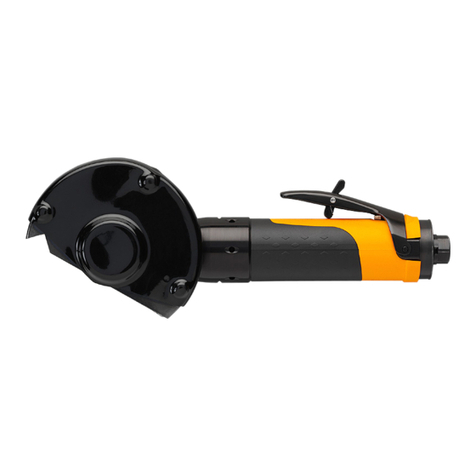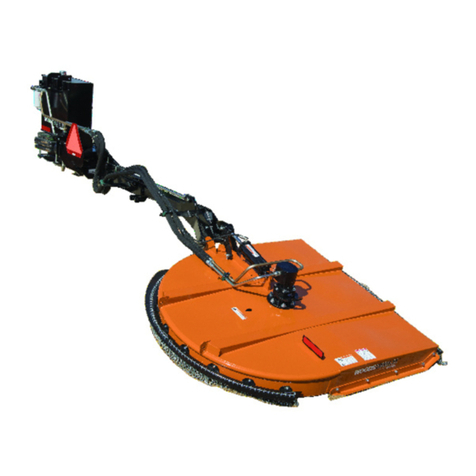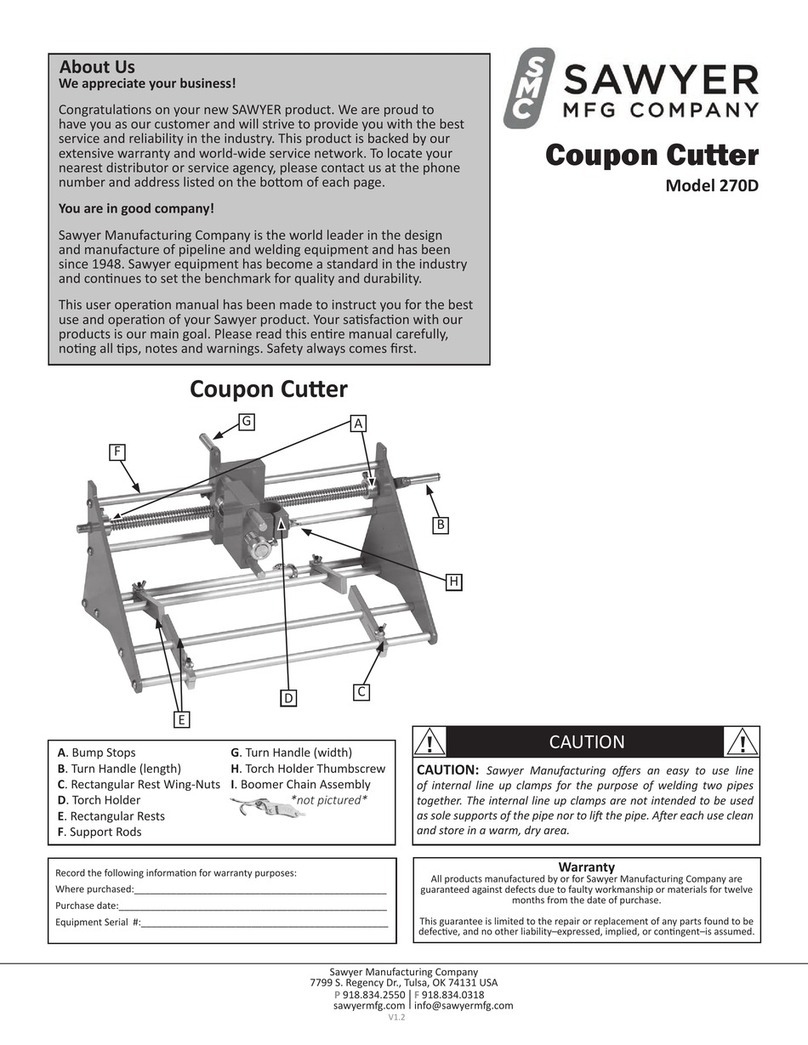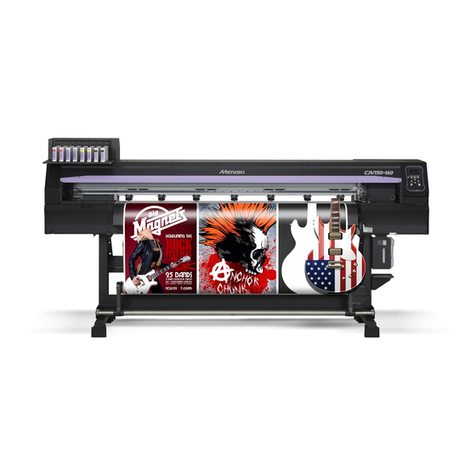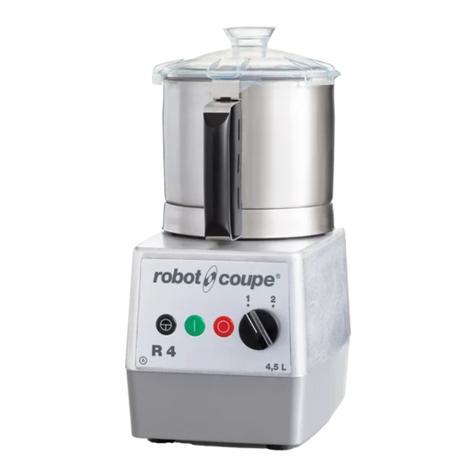Epiroc ER-L Series Maintenance and service guide

ER-L 100, 250, 400, 450, 600, 700, 1100, 1500, 2000
Safety and operating instructions
Longitudinal Drum Cutters
© Anbaufräsen PC GmbH | 3390 5221 01 | 2020-09-07
Original Instructions


Contents
© Anbaufräsen PC GmbH | 3390 5221 01 | 2020-09-07
Original Instructions
3
Table of Contents
1 Introduction ................................................................................................................................8
1.1 About these Safety and Operating Instructions...............................................................................................8
2 Safety instructions.....................................................................................................................9
2.1 Signal words........................................................................................................................................................9
2.2 Qualification ......................................................................................................................................................10
2.3 Intended use ......................................................................................................................................................10
2.3.1 Intended use of the longitudinal drum cutters with a drilling auger..................................................................10
2.4 Use other than intended ...................................................................................................................................11
2.5 Protective equipment........................................................................................................................................11
2.6 Carrier, precautions ..........................................................................................................................................11
2.7 Transport, precautions .....................................................................................................................................11
2.8 Hydraulic installation, precautions .................................................................................................................12
2.9 Media/consumables, precautions....................................................................................................................12
2.10 Explosion and fire, precautions.......................................................................................................................13
2.11 Electrical shock, precautions ..........................................................................................................................13
2.12 Falling stones, precautions..............................................................................................................................13
2.13 Emissions, precautions....................................................................................................................................14
2.14 Handling machines, precautions.....................................................................................................................14
2.15 Repair, precautions...........................................................................................................................................15
2.15.1 Maintenance works not allowed by the manufacturer ....................................................................................15
2.16 Changes to the hydraulic attachment, precautions.......................................................................................15
2.17 Environmental pollution, precautions.............................................................................................................15
3 Overview ...................................................................................................................................16
3.1 Equipment description .....................................................................................................................................16
3.2 Function .............................................................................................................................................................16
3.3 Modules..............................................................................................................................................................17
3.4 Signs / labels .....................................................................................................................................................19
3.4.1 Signs................................................................................................................................................................19
3.4.2 Name plate ......................................................................................................................................................19
3.4.3 Labels ..............................................................................................................................................................20
3.5 Applications.......................................................................................................................................................20
3.6 Working area and hazardous area...................................................................................................................20
3.7 Removing the packaging..................................................................................................................................20
3.8 Scope of delivery ..............................................................................................................................................20
3.9 Standard round attack picks............................................................................................................................21
3.10 Tools for round attack picks ............................................................................................................................22
4 Transport ..................................................................................................................................23
4.1 Transport using a crane ...................................................................................................................................23
4.2 Transport using a forklift truck........................................................................................................................24
4.3 Transport using a truck ....................................................................................................................................24

Contents
4 © Anbaufräsen PC GmbH | 3390 5221 01 | 2020-09-07
Original Instructions
5 Installation ................................................................................................................................25
5.1 Media/consumables ..........................................................................................................................................25
5.1.1 Mineral hydraulic oil.........................................................................................................................................25
5.1.2 Non-mineral hydraulic oil .................................................................................................................................25
5.1.3 Gear oil ............................................................................................................................................................26
5.2 Preconditions for the carrier............................................................................................................................26
5.3 Preconditions for adapter plate .......................................................................................................................26
5.4 Attaching the hydraulic attachment to the carrier .........................................................................................27
5.4.1 Mechanical mounting aspects .........................................................................................................................27
5.4.2 First installation................................................................................................................................................28
5.4.3 Making the hydraulic connections ...................................................................................................................29
5.5 Removing the hydraulic attachment from the carrier....................................................................................31
5.6 Exchangeable attachments..............................................................................................................................32
5.6.1 Mount hexagonal receiver ...............................................................................................................................32
5.6.2 Mount drilling auger .........................................................................................................................................34
5.6.3 Mount pivot adapter.........................................................................................................................................34
5.6.4 Dismount pivot adapter....................................................................................................................................35
5.6.5 Dismount drilling auger....................................................................................................................................35
5.6.6 Dismount hexagonal receiver and intermediate flange ...................................................................................36
5.6.7 Selecting the correct drilling auger ..................................................................................................................37
5.6.8 Specification of soil classes for earth & rock drilling........................................................................................37
6 Operation ..................................................................................................................................38
6.1 Preparations before starting ............................................................................................................................39
6.2 Commissioning .................................................................................................................................................39
6.2.1 Checks during commissioning.........................................................................................................................39
6.3 Switching the drum cutter on and off .............................................................................................................40
6.4 Functional test...................................................................................................................................................40
6.5 Correct operation ..............................................................................................................................................41
6.5.1 Operating the drilling auger .............................................................................................................................41
6.6 Prohibited operation .........................................................................................................................................42
6.6.1 Cylinder end positions .....................................................................................................................................42
6.6.2 Moving the carrier............................................................................................................................................42
6.6.3 Lifting/Transporting..........................................................................................................................................42
6.6.4 Impacting/chopping .........................................................................................................................................43
6.7 Activities after use ............................................................................................................................................43
7 Maintenance .............................................................................................................................44
7.1 Maintenance works not allowed by the manufacturer ..................................................................................45
7.2 Maintenance schedule......................................................................................................................................46
7.3 Depressurising the hydraulic system .............................................................................................................47
7.4 Cleaning .............................................................................................................................................................47
7.5 Checking bolted connections ..........................................................................................................................48
7.6 Checking the hydraulic attachment and adapter plate for cracks ...............................................................48
7.7 Checking the adapter plate bolts for wear......................................................................................................48
7.8 Change gear oil .................................................................................................................................................48
7.8.1 Oil change intervals .........................................................................................................................................48
7.8.2 Preparation ......................................................................................................................................................49
7.8.3 Drain off gear oil ..............................................................................................................................................49
7.8.4 Fill up gear oil ..................................................................................................................................................49
7.9 Check the round attack picks and pick boxes ...............................................................................................50

Contents
© Anbaufräsen PC GmbH | 3390 5221 01 | 2020-09-07
Original Instructions
5
7.10 Replace round attack picks..............................................................................................................................50
7.10.1 Replace round attack pick with knock on retainer ...........................................................................................51
7.10.2 Replace round attack pick with retaining sleeve..............................................................................................52
7.10.3 Replace round attack picks with quick snap retainer.......................................................................................53
7.10.4 Replace round attack picks with retaining ring ................................................................................................54
7.11 Replace cutter drum .........................................................................................................................................55
7.11.1 Disassemble cutter drum ER100L - ER2000L.............................................................................................55
7.11.2 Disassemble cutter drum ERL700, ERL1100................................................................................................56
7.11.3 Assemble cutter drum......................................................................................................................................57
7.12 Checking hydraulic lines..................................................................................................................................58
7.13 Checking and cleaning the hydraulic oil filter of the carrier.........................................................................59
7.14 Replace hydraulic hoses ..................................................................................................................................59
7.15 Actions following maintenance .......................................................................................................................59
7.16 Bolt connections / Tightening torques ...........................................................................................................60
8 Troubleshooting.......................................................................................................................63
8.1 Faults table ........................................................................................................................................................63
8.2 Cutter drum does not turn / is blocked ...........................................................................................................64
8.3 Cutter drum turns too slowly ...........................................................................................................................64
8.4 Drum cutter stops moving with light pressure ..............................................................................................65
8.5 Unusual oscillation of the cutter drum ...........................................................................................................65
8.6 Round attack picks do not turn .......................................................................................................................65
8.7 Unusually loud gear noise ...............................................................................................................................65
8.8 Unusually loud noise from the hydraulic motor ............................................................................................65
8.9 Overpressure cover for the hydraulic motor deformed, oil leak on sealing surface, oil leak at the pres-
sure limiting valve.............................................................................................................................................66
8.10 Oil leaking at the cutter drum area ..................................................................................................................66
8.11 Behaviour following fault elimination .............................................................................................................66
9 Repair ........................................................................................................................................67
9.1 Sending in the hydraulic attachment for repairs ...........................................................................................67
10 Storage......................................................................................................................................68
10.1 Drum cutter........................................................................................................................................................68
10.1.1 Short storage ...................................................................................................................................................68
10.1.2 Long storage....................................................................................................................................................68
10.2 Cutter drum........................................................................................................................................................68
10.3 Round attack picks ...........................................................................................................................................68
11 Disposal ....................................................................................................................................69
11.1 Drum cutter........................................................................................................................................................69
11.2 Hydraulic hoses ................................................................................................................................................69
11.3 Hydraulic oil.......................................................................................................................................................69
11.4 Gear oil...............................................................................................................................................................69
12 Technical specifications..........................................................................................................70
12.1 Technical specifications ADU..........................................................................................................................79
13 Appendix...................................................................................................................................81

Contents
6 © Anbaufräsen PC GmbH | 3390 5221 01 | 2020-09-07
Original Instructions
13.1 Hydraulic installation version 1 for hydraulic hammer .................................................................................81
13.2 Hydraulic installation version 2 for hydraulic shear systems ......................................................................82
13.3 Hydraulic settings (explanation for following diagrams) ..............................................................................83
13.4 Hydraulic settings ER 100 L.............................................................................................................................84
13.5 Hydraulic settings ER 250 L.............................................................................................................................86
13.6 Hydraulic settings ER400L, ER450L, ER600L ..........................................................................................88
13.7 Hydraulic settings ERL 700..............................................................................................................................89
13.8 Hydraulic settings ERL1100, ER1500L.........................................................................................................90
13.9 Hydraulic settings ER 2000 L...........................................................................................................................92
14 EC Declaration of Conformity (EC Directive 2006/42/EC) ....................................................94

Contents
© Anbaufräsen PC GmbH | 3390 5221 01 | 2020-09-07
Original Instructions
7

Safety and operating instructions
8 © Anbaufräsen PC GmbH | 3390 5221 01 | 2020-09-07
Original Instructions
1 Introduction
Epiroc is a leading productivity partner for the mining, in-
frastructure and natural resources industries. With cut-
ting-edge technology, Epiroc develops and produces in-
novative drill rigs, rock excavation and construction
equipment, and provides world-class service and con-
sumables.
The company was founded in Stockholm, Sweden, and
has passionate people supporting and collaborating with
customers in more than 150 countries.
Anbaufräsen PC GmbH
Ulmenstr. 3
D - 36469 Bad Salzungen / OT Hämbach
Tel.: +49 3695 851 09 0
Fax: +49 3695 851 0999
1.1 About these Safety and
Operating Instructions
The aim of these Instructions is to familiarise you with
the safe and effective operation of the hydraulic attach-
ment. You will also find instructions for regular mainte-
nance activities for the hydraulic attachment in this docu-
ment.
Please read these Instructions carefully prior to the first
attachment and use of the hydraulic attachment.
The different designation of the texts means as follows:
►
Action step in a safety instruction
♦
Action step
1.
2.
Established operation process
A
B
C
Explanation of the elements of a drawing
•
•
•
Listing
Symbols used in illustrations have the following mean-
ings:
permitted operation
prohibited operation

Safety and operating instructions
© Anbaufräsen PC GmbH | 3390 5221 01 | 2020-09-07
Original Instructions
9
2 Safety instructions
This is the safety alert symbol. It is used to alert
you to potential personal injury hazards. Obey
all safety messages that follow this symbol to
avoid possible injury or death.
Read these Safety and operating instructions
and specifically all safety instructions before us-
ing the hydraulic attachment. This will:
• prevent the risk of injuries and fatal accidents for
yourself and others,
• protect the environment against environmental dam-
age.
• protect the hydraulic attachment and other property
against material damage,
Follow all instructions in these Safety and operating in-
structions.
Store these Safety and operating instructions in the doc-
ument compartment of the carrier cab.
Anyone
• transporting,
• installing or removing,
• operating,
• maintaining,
• repairing,
• storing or
• disposing of
the hydraulic attachment must have read and under-
stood these Safety and operating instructions.
These Safety and operating instructions belong to the
hydraulic attachment. Keep it for the life of the product.
Ensure, if applicable, that any received amendment is in-
corporated in the instructions. Hand over the Safety and
operating instructions if ever you lend, rent out or sell the
hydraulic attachment.
All safety regulations listed in this manual comply with
the laws and regulations of the European Union. Also
observe the additional national/regional regulations.
Hydraulic attachment operation outside the European
Union is subject to the laws and regulations valid in the
country of use. Please observe any other, more stringent
regional regulations and legislation.
Read the carrier manufacturer's Safety and operating In-
structions before attaching the hydraulic attachment to
the carrier and operating it. Observe all instructions.
2.1 Signal words
The signal words Danger, Warning, Caution, and Notice
are used as follows in these Safety and operating in-
structions:
DANGER indicates a hazardous situation
which, if not avoided, will result in
death or serious injury.
WARNING indicates a hazardous situation
which, if not avoided, could result in
death or serious injury.
CAUTION indicates a hazardous situation
which, if not avoided, could result in
minor or moderate injury.
NOTICE The signal word NOTICE is used to
address practices related to possible
property damage but not related to
personal injury.

Safety and operating instructions
10 © Anbaufräsen PC GmbH | 3390 5221 01 | 2020-09-07
Original Instructions
2.2 Qualification
Transporting the hydraulic attachment is only permitted
if carried out by people who:
• are authorised to operate a crane or a forklift truck
according to the applicable national provisions,
• know all the relevant national/regional safety provi-
sions and accident prevention rules,
• have read and understood the safety and transport
chapter of these Safety and operating instructions.
First installation and commissioning of the hydraulic
attachment is only permitted if carried out by people
who:
• are authorised by AnbaufräsenPCGmbH,
• know all the relevant national/regional safety provi-
sions and accident prevention rules,
• have read and understood these Safety and operat-
ing instructions.
Installing, maintaining, storing and disposing of the
hydraulic attachment are only permitted if carried out by
people who:
• know all the relevant national/regional safety provi-
sions and accident prevention rules,
• have read and understood these Safety and operat-
ing instructions.
Operating the hydraulic attachment is only permitted if
carried out by qualified carrier drivers. Carrier drivers are
qualified if they:
• have been trained to operate a carrier according to
the national regulations,
• know all the relevant national/regional safety provi-
sions and accident prevention rules,
• have read and understood these Safety and operat-
ing instructions.
Testing the hydraulic installation is only permitted if
carried out by professionals. Professionals are people
who are authorised to approve a hydraulic installation for
operation according to the national regulations.
Repairing the hydraulic attachment is only permitted if
carried out by professionals trained by An-
baufräsenPCGmbH. These professionals must have
read and understood these Safety and operating instruc-
tions. They must follow all safety instructions and guide-
lines for repair. Otherwise the operational safety of the
hydraulic attachment is not guaranteed.
Personnel (carrier operator, maintenance personnel)
must receive instructions from the operator regularly. For
the purpose of improved traceability, the provision of in-
structions must be recorded.
2.3 Intended use
Only attach the drum cutter to a hydraulic carrier of a
suitable load-bearing capacity. Read the carrier manu-
facturer's Safety and operating instructions before at-
taching the drum cutter to the carrier and operating it.
Observe all instructions.
The drum cutter is intended exclusively for mounting on
a hydraulic excavator or, following agreement with the
authorized Customer Center / dealer in your area, with
another carrier.
The drum cutter serves exclusively to cut:
• Rock
• Concrete (reinforced and non-reinforced)
Prior to carrying out cutting work on reinforced concrete,
discuss this with the manufacturer (An-
baufräsenPCGmbH).
• Asphalt
• Frozen soil
• Ice
Furthermore, the drum cutter is suitable for cutting
ditches and tunnels and for mixing soil structures. The
drum cutter can be used to a depth of 30m (99ft) under
water. Contact the authorized Customer Center / dealer
in your area if bigger water depth is required.
When cutting with the drum cutter, check the compres-
sive strengths of the rock to be cut (see chapter Techni-
cal specifications).
Intended use also includes adhering to all specifications
contained in this manual.
Any further use which exceeds or is contrary to the in-
tended use is considered inappropriate use.
2.3.1 Intended use of the longitudinal drum
cutters with a drilling auger
The longitudinal drum cutter with drilling auger is in-
tended exclusively for mounting on a hydraulic excavator
or, following agreement with the authorized Customer
Center / Dealer in your area, with another carrier.
The longitudinal drum cutter with drilling auger serves
exclusively for creating vertical holes in:
• Ground classes 1 to 7 per DIN18300
• Stratified, fragmented and brittle rock of medium
hardness
• Frozen soil
• Ice
Typical applications are overhead line construction,
beam-type retaining construction, earth anchors, strain-
relieving boring, fencing and planting.

Safety and operating instructions
© Anbaufräsen PC GmbH | 3390 5221 01 | 2020-09-07
Original Instructions
11
The drilling auger can be used to a depth of 30m (99ft)
under water. Contact the authorized Customer Center /
Dealer in your area if bigger water depth is required.
2.4 Use other than intended
Misusing the drum cutter or the boom can lead to dan-
gerous situations.
• Do not use the drum cutter in areas with a risk for
explosions.
• Do not cut any materials other than those mentioned
in chapter Intended use.
• Do not carry out any impacting work.
• Do not operate the drum cutter if picks are broken.
• Do not use the drum cutter as a device for lifting
people or materials.
• Do not use the drum cutter as a surface for carrying
or transporting machines, materials or tools.
• Do not use the drum cutter to take the weight of the
carrier.
Claims of any kind as a result of damages arising from
misuse are excluded.
2.5 Protective equipment
Personal protective equipment must comply with the ap-
plicable health and safety regulations.
Always wear the following personal protective equip-
ment:
• protective helmet
• safety glasses with side protectors
• protective gloves
• protective shoes
• warning vest
• Light respiratory protection
• Protective work clothing
Protective work clothing is tight-fitting work clothing with
low resistance to tearing, with tight sleeves and without
projecting parts. It is primarily used to protect against en-
tanglement by moving machine parts. Do not wear rings,
chains or other jewellery.
2.6 Carrier, precautions
WARNING Falling carrier
If the load-bearing capacity of the carrier used is insuffi-
cient, the carrier will not be stable. It can topple over and
cause injuries and damage.
Using a carrier whose load-bearing capacity is too high
will greatly burden the hydraulic attachment causing it to
wear faster.
uOnly attach the hydraulic attachment to a hydraulic
carrier of a suitable load-bearing capacity.
uThe carrier must remain stable at all times.
uRead the carrier manufacturer's Safety and operating
Instructions before attaching the hydraulic attach-
ment to the carrier and operating it. Observe all in-
structions.
NOTICE Damage to the hydraulic attachment
Working with a hydraulic attachment mounted to a long
reach boom may cause damage to the hydraulic attach-
ment.
uBefore working with a hydraulic attachment mounted
to a long reach boom consult the Epiroc Customer
Center / Dealer in your area.
2.7 Transport, precautions
WARNING Risk of death due to suspended loads
When lifting loads these can swing out and fall. This can
result in serious injuries or even death.
uNever stand underneath or in the swinging range of
suspended loads.
uOnly move loads under supervision.
uOnly use approved lifting equipment and lifting gear
with sufficient load bearing capacity.
uDo not use worn lifting gear (ropes, belts, chains,
shackles etc.).
uDo not place lifting gear such as ropes and belts on
sharp edges or corners, do not knot these or twist
them.
uWhen leaving the workplace, set down the load.
WARNING Injury due to swivelling load
When transporting the load by crane it can swivel and
cause severe injuries and considerable damage to prop-
erty.
uEnsure that no personnel, objects or obstacles are
located in the swivel range of the load.

Safety and operating instructions
12 © Anbaufräsen PC GmbH | 3390 5221 01 | 2020-09-07
Original Instructions
2.8 Hydraulic installation,
precautions
WARNING Hydraulic pressure too high
If the hydraulic pressure is too high, the parts of the hy-
draulic attachment will be exposed to excessively high
loads. Parts can break loose or burst causing serious in-
juries.
uLay the drain line of the pressure relief valve directly
in the tank to ensure the safe functioning of the pres-
sure relief valve!
uThe pressure relief valve must be set at the maxi-
mum static pressure.
uThe pressure relief valve setting must be checked to
ensure that the maximum static pressure (see chap-
ter Technical specifications) of the hydraulic instal-
lation is not exceeded at any time. Attach a lead seal
to the pressure relief valve.
uPrior to their first use, the safety facilities on the hy-
draulic installation must be checked by a profes-
sional/authorised monitoring body for their quality
(CE mark etc.), suitability and proper functioning.
uIf any significant changes are made to the hydraulic
installation, a new acceptance inspection is to be
carried out in accordance with the relevant national
safety provisions.
WARNING Hot hydraulic oil squirting out
The hydraulic system is under high pressure. Hydraulic
lines may spring a leak or burst. Hydraulic oil squirting
out can lead to serious injury.
uWhen attaching the hydraulic attachment do not
route any hydraulic lines through the carrier's cab.
uOnly use hydraulic lines which comply with the fol-
lowing quality requirements: Hydraulic hoses with 4
reinforcement steel wires 4SP and 4SH according to
DINEN856, Hydraulic hoses with high tensile steel
wire braid 1SN and 2SN according to DINEN853,
Hydraulic pipes, seamless cold-drawn steel pipes to
DINEN10305.
2.9 Media/consumables,
precautions
WARNING Hot hydraulic oil under high pressure
Hydraulic oil will squirt out under high pressure if there is
a leakage. The jet of oil might penetrate people's skin
and cause permanent damage. Hot hydraulic oil can
cause burns.
uNever use your hands to find leaks.
uAlways keep your face away from a possible leak.
uIf hydraulic oil has penetrated your skin consult a
doctor immediately.
WARNING Hydraulic oil spills
Spilt hydraulic oil can make a floor slippery. If people slip
they can be injured. Hydraulic oil is environmentally
harmful and must not penetrate the ground or enter the
water table or water supplies.
uMake sure not to spill any hydraulic oil.
uImmediately clean the floor if you have spilt hydraulic
oil.
uObserve all safety and environmental protection pro-
visions when handling hydraulic oil.
WARNING Skin infections/diseases due to oil and
grease
Hydraulic oil and grease can cause rashes (or even
eczema) if they come into contact with the skin.
uAvoid all skin contact with hydraulic oil and grease.
uUse a suitable skin protection product.
uAlways wear safety gloves when working with hy-
draulic oil or grease.
uImmediately clean any skin that has been contami-
nated by oil or grease with water and soap.

Safety and operating instructions
© Anbaufräsen PC GmbH | 3390 5221 01 | 2020-09-07
Original Instructions
13
2.10 Explosion and fire,
precautions
DANGER Explosion and fire
Explosions cause serious injury or death.
If the hydraulic attachment encounters explosives in op-
eration, it may cause an explosion.
uNever operate the hydraulic attachment in the direct
vicinity of explosives.
uMake sure that no explosives are hidden in the
ground.
uCheck gas line position plans of the complete con-
struction area.
DANGER Explosion and fire
Operating the hydraulic attachment may create sparks
which ignite highly flammable gases.
This may lead to fire or an explosion.
uNever work in an environment with highly flammable
substances.
uMake sure that there are no hidden sources of gas in
the work area.
uCheck gas line position plans of the complete con-
struction area.
DANGER Explosion and fire
Dust-rich air can form an explosive atmosphere which
may ignite when operating the hydraulic attachment.
This may lead to fire or an explosion.
uNever operate the hydraulic attachment in an explo-
sion-hazard atmosphere.
uAlways provide sufficient ventilation when working in
buildings or in a confined area.
2.11 Electrical shock, precautions
DANGER Electrical shock
Any contact of the hydraulic attachment with electric cir-
cuits or other sources of electricity will lead to an electric
shock, resulting in serious injury or death. The hydraulic
attachment is not electrically insulated.
uNever work in the vicinity of electric circuits or other
sources of electricity.
uMake sure that there are no hidden circuits in the
work area.
uCheck wiring diagrams.
2.12 Falling stones, precautions
DANGER Fragments flying around
Fragments of material which come loose while operating
the hydraulic attachment may be flung away and can
cause serious injury if people are hit by them. Small ob-
jects falling from a great height can also cause serious
damage.
During hydraulic attachment operation the danger zone
is considerably greater than during the excavation oper-
ation due to fragments of stone and pieces of steel flying
around, and for this reason the danger zone must, de-
pending on the type of material to be worked on, be en-
larged correspondingly, or secured in a suitable manner
through corresponding measures.
uSecure the danger zone.
uEnsure that no persons are within a distance of 15m
(50ft) during cutting work.
uEnsure that no persons are within a distance of 50m
(165ft) during cutting work on reinforced steel.
uStop the hydraulic attachment immediately if anyone
enters the danger zone.
uClose the windscreen and the side windows of the
driver's cab.
uThe cabin of the hydraulic carrier must be protected
by means of suitable measures (e.g. armoured glass,
min. class P4A according to DINEN356) against
damage due to flying rock.
uMake sure no flying fragments can leave the danger
zone (e.g. safety fence).

Safety and operating instructions
14 © Anbaufräsen PC GmbH | 3390 5221 01 | 2020-09-07
Original Instructions
2.13 Emissions, precautions
WARNING Noise hazard
Operating the hydraulic attachment creates a loud noise.
Long term high sound pressure level can affect your
hearing.
uWear suitable hearing protection.
WARNING Lung disease
Dust may be generated when operating the hydraulic at-
tachment. If dust from rocks or silica dust, produced
when operating the hydraulic attachment on rocks, con-
crete, asphalt or other such materials, is inhaled this
may lead to silicosis (dust lungs, a severe lung disease).
Silicosis is a chronic disease which may lead cancer and
death.
uWear a suitable breathing mask.
WARNING Vibration hazards
When working with the drum cutter severe vibrations can
occur and may cause considerable significant injuries
and chronic damage to health.
uOperate the drum cutter with a constant load, in or-
der to minimise existing vibrations.
uAvoid abrupt starting up or stopping of the cutter
drums.
WARNING Risk of death if exhaust gases are not
vented
When working in buildings or tunnels, exhaust gases
from the carrier (diesel motor) can collect and cause poi-
soning or even death.
uEffectively vent exhaust gases from buildings or tun-
nels using a ventilation system.
uKeep the cabin doors of the carrier closed.
WARNING Hot surfaces
The cutter drums of the drum cutter can become very
hot in operation. Skin contact with hot surfaces results in
severe burns to the skin.
uAlways wear heat-resistant protective work clothes
and protective gloves, when working in close proxim-
ity to hot surfaces.
uPrior to all work, check the drum cutter to ensure that
all surfaces have cooled to the ambient temperature.
2.14 Handling machines,
precautions
WARNING Injuries due to incorrect operation
Incorrect operation can result in severe injuries and may
cause considerable damage to property.
uCarry out all operating steps in accordance with
these Safety and operating instructions.
uPrior to starting work, ensure that:
- All covers and safety devices are installed and are
fully functional.
- No persons are in the hazardous area.
uNever switch off any safety devices during opera-
tions or bridge these.
WARNING Injuries due to unclean workplace
A dirty workplace can cause accidents and may result in
severe injuries.
uAlways keep the accesses to the carrier cabin clean.
uAlways keep the cabin windows clean.
uDo not leave parts or objects lying around the work-
ing area.
WARNING Injuries due to missed inspection and
repair work
Disregarding or neglecting daily inspections can result in
serious accidents and lead in turn to the severe injuries
associated with them.
uCarry out all daily inspections before and after work.
uReport any faults or damage to maintenance person-
nel immediately and instruct them to repair them.
uOnly restart the carrier once the fault or damage has
been repaired.
WARNING Narcotics, alcohol and drugs
Narcotics, alcohol and medicinal drugs make their users
less alert and affect their ability to concentrate. Negli-
gence and incorrectly assessing a situation can result in
serious injury or death.
uNever work on or with the hydraulic attachment when
under the influence of narcotics, alcohol or drugs
which affect your alertness.
uNever allow other people who are under the influ-
ence of narcotics, alcohol or drugs which affect their
alertness to work on or with the hydraulic attach-
ment.

Safety and operating instructions
© Anbaufräsen PC GmbH | 3390 5221 01 | 2020-09-07
Original Instructions
15
2.15 Repair, precautions
Maintenance work must be conducted exclusively by au-
thorised and trained maintenance personnel.
2.15.1 Maintenance works not allowed by
the manufacturer
Some maintenance activities must be carried out exclu-
sively by the manufacturer. If such maintenance activi-
ties are required, consult the authorized Customer cen-
ter / Dealer in your area in order to ensure that they pro-
ceed safely.
The following maintenance activities are not allowed by
the manufacturer:
• Repairs to the gear and hydraulic motor
• Replacing wear sleeves and pick boxes
• Welding work on the cutter drums
• Welding work on the gear housing
2.16 Changes to the hydraulic
attachment, precautions
WARNING Changes to the hydraulic attachment
Changes to the hydraulic attachment or the adapter
plate may lead to serious injury.
uNever carry out any changes to the hydraulic attach-
ment or the adapter plate.
uOnly use original parts or accessories approved by
the manufacturer.
uModifications that entail new hazards may require a
new procedure for assessing conformity.
WARNING Injuries due to the use of incorrect
spare parts
The use of incorrect or defective spare parts can result
in risks to personnel as well as damage, malfunctioning
or a total failure of the drum cutter.
uOnly use original parts or accessories approved by
the manufacturer.
uIf there are any questions, consult the authorized
Customer Center / Dealer in your area.
2.17 Environmental pollution,
precautions
NOTICE Environmental pollution due to hydraulic oil
Hydraulic oil is permanently environmentally harmful. Es-
caped hydraulic oil will lead to groundwater and soil con-
tamination. Organisms may die.
uCollect any hydraulic oil which escapes to avoid envi-
ronmental pollution. For minor volumes use an ab-
sorbing medium (in case of an emergency use soil).
In case of major leakages contain the hydraulic oil. It
must not drain off and penetrate the ground or enter
the water table or water supplies.
uCollect contaminated absorbing medium or soil in a
watertight box/container and close it tight.
uContact an authorized waste management company.
uDispose of all contaminated material in accordance
with the applicable environmental regulations.

Safety and operating instructions
16 © Anbaufräsen PC GmbH | 3390 5221 01 | 2020-09-07
Original Instructions
3 Overview
3.1 Equipment description
The illustration gives an overview of the main parts and
components of the hydraulic attachment. Actual details
may differ.
A. Intermediate bracket
B. Drive shaft with hydraulic motor
C. Round attack pick
D. Pick box
E. Cutter drum
F. Oil filler/drain screw
G. Transport lug
3.2 Function
The operation of a drum cutter is described in a simpli-
fied version below:
The drum cutter is an attachment for hydraulic carriers.
The cutter drum is powered by the hydraulic motor of the
drum cutter. The round attack picks are attached to the
cutter drum at a defined angle. A rotating motion of the
cutter drum facilitates the cutting process and thus re-
duces the size of the rock.
The longitudinal drum cutter can be reconfigured as a
drive for a drilling auger. This drilling auger is an optional
accessory part and is not contained within the scope of
deliverables.

Safety and operating instructions
© Anbaufräsen PC GmbH | 3390 5221 01 | 2020-09-07
Original Instructions
17
3.3 Modules
Cutter drum
The longitudinal drum cutter is equipped with a cutter
drum driven by the drive shaft.
ER 100 L - ER 2000 L:
The cutter drum is fastened directly to the drive shaft
with screws and special clamping sleeves.
ERL 700, ERL 1100:
The cutter drum is attached via a hexagonal connection
to the output shaft and fixed with locking screws(H).
A certain number of pick boxes are attached to the sur-
face of the cutter drum. These hold the round attack
picks in position.
Transport lug
The transport lug(G) serves as an anchor point for the
lifting gear when transporting the drum cutter.
The transport lug is an eyebolt and can be unscrewed
after transportation. After removal of the transport lug the
thread must be protected from dirt and damage by a
blank plug.
Drive, hydraulic motor, intermediate bracket
The drum cutter is fastened to a suitable adapter plate
on the carrier boom via the intermediate bracket(A). The
intermediate bracket is bolted to the adapter plate.
The drive(B) carries the cutter drum. The hydraulic mo-
tor transfers the drive moment through the drive shaft to
the cutter drum.
Oil drain/filling plug
Actual details may differ.
The screw/screws is/are used for draining, filling and
venting the drive while changing gear oil.

Safety and operating instructions
18 © Anbaufräsen PC GmbH | 3390 5221 01 | 2020-09-07
Original Instructions
Round attack picks
The round attack picks are made of steel and have a
brazed tungsten carbide tip. The round attack picks are
held in the pick boxes.
The appearance of the round attack picks may deviate
from the image shown here.
Pick boxes
The pick boxes are welded onto the cutter drums for
holding round attack picks. Some pick boxes may have a
wear sleeve, which can be exchanged.
Drilling auger
C
A
D
B
The drilling auger(C) can be mounted on the longitudi-
nal drum cutter as an accessory part. To do so the cutter
drum must be disassembled and the drilling auger
mounted onto the drive shaft via appropriate auger
adapter(B) . In addition, a pivot adapter(A) is mounted
between the carrier stick and the intermediate bracket.
The complete drilling auger has a drilling head(D) to
loosen the material and the auger removes the soil from
the bore hole.
Pivot adapter
The pivot adapter is an accessory part. The swivel
adapter must always be mounted when using the op-
tional drilling auger. This swivel adapter enables the
drilling auger to be aligned vertically and relieves the drill
drive of inadmissible bending forces.

Safety and operating instructions
© Anbaufräsen PC GmbH | 3390 5221 01 | 2020-09-07
Original Instructions
19
3.4 Signs / labels
WARNING Missing warnings
The name plate and the labels on the hydraulic attach-
ment contain important information about the hydraulic
attachment and for personal safety. A missing warning
can lead to overlooking or misinterpretation of possible
risks and cause personal hazards. The signs and labels
must always be clearly legible.
uImmediately replace any defective name plates and
labels.
uUse the spare parts list to order new name plates
and labels.
3.4.1 Signs
The warning symbol and the
book symbol indicate that the
Safety and Operating Instruc-
tions must be read prior to use of
the hydraulic attachment and in
particular the chapter on Safety.
3.4.2 Name plate
A. Model
B. Year of construction of hydraulic attachment
C. Max. hydraulic pressure
D. Weight of hydraulic attachment
E. Serial number
F. Name and address of manufacturer
G. The warning symbol and the book symbol indicate
that the Safety and Operating Instructions must be
read prior to use of the hydraulic tool and in particu-
lar the chapter on Safety.
H. The CE symbol indicates that the hydraulic attach-
ment was produced in conformity with CE. You can
find further information about this in the enclosed EC
Declaration of Conformity.

Safety and operating instructions
20 © Anbaufräsen PC GmbH | 3390 5221 01 | 2020-09-07
Original Instructions
3.4.3 Labels
A
A. Danger zone
Danger zone
No persons should be within
the danger zone. Fragments of
material which come loose
while operating the hydraulic at-
tachment may be flung away
and can cause serious injury if
people are hit by them. Small
objects falling from a great
height can also cause serious
damage.
3.5 Applications
The drum cutter is suitable for use in trenching and tun-
nelling, for demolition and renovation works, quarrying
and in special underground engineering.
3.6 Working area and hazardous
area
A. Working area for operating personnel
B. Hazardous area when working with the drum cutter
• The working area for the operating personnel is in
the cabin of the carrier.
• The hazardous area is in the direct vicinity of the
drum cutter.
• Whilst operating the drum cutter, the minimum dis-
tance around the carrier is 15m (50ft).
• When cutting reinforced concrete, the minimum dis-
tance around the carrier is 50m (165ft).
3.7 Removing the packaging
nRemove all the packaging material.
nDispose of it in accordance with the applicable provi-
sions.
nCheck that the delivery is complete.
nCheck the delivery for visual damage.
nIf any defects are found, consult the Epiroc Customer
Center / dealer in your area.
3.8 Scope of delivery
The drum cutter is delivered complete with:
• Drum cutter including rotatable upper part
• Safety and operating instructions
• Spare parts list
• EC Declaration of Conformity
• Hoses:
- Pressure line
- Tank line including precharge valve
- Leakage oil line
• Overpressure cover plate including O-ring and
screws
• Set of standard round attack picks including retain-
ers (see table below)
• Set of tools for round attack pick assembly and dis-
assembly (see table below)
This manual suits for next models
9
Table of contents
Other Epiroc Cutter manuals
Popular Cutter manuals by other brands
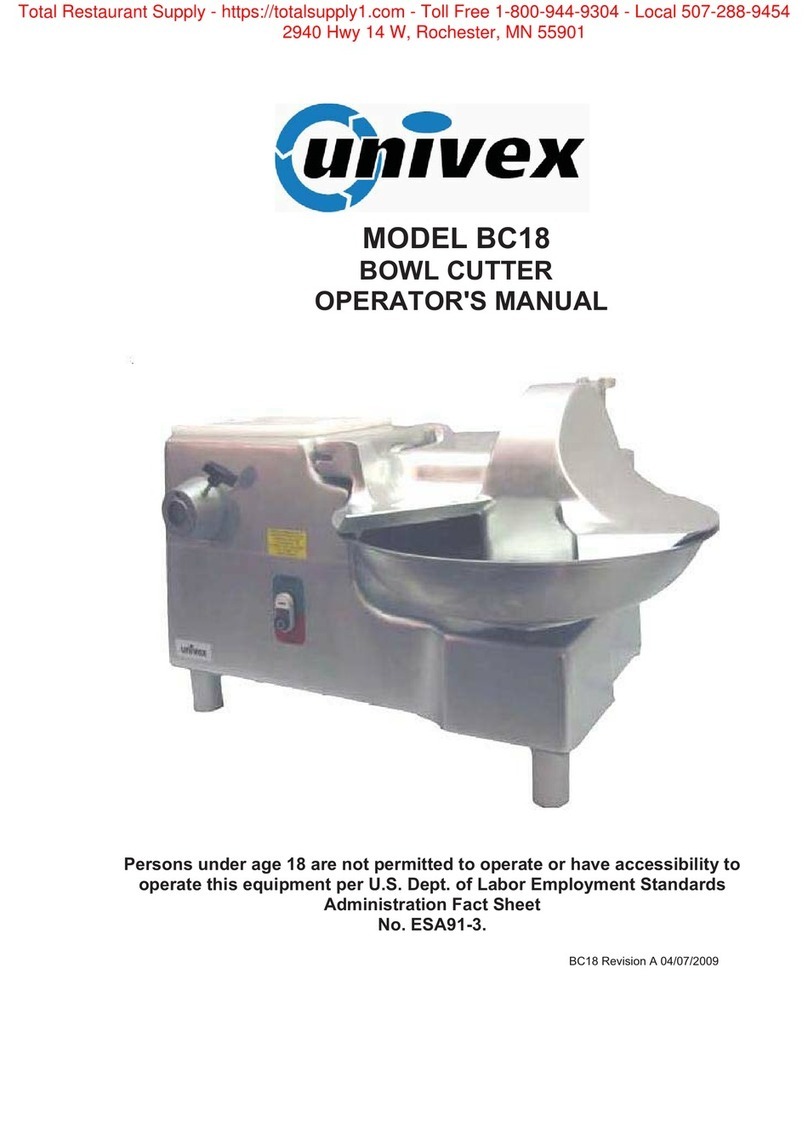
Univex
Univex BC18 Operator's manual
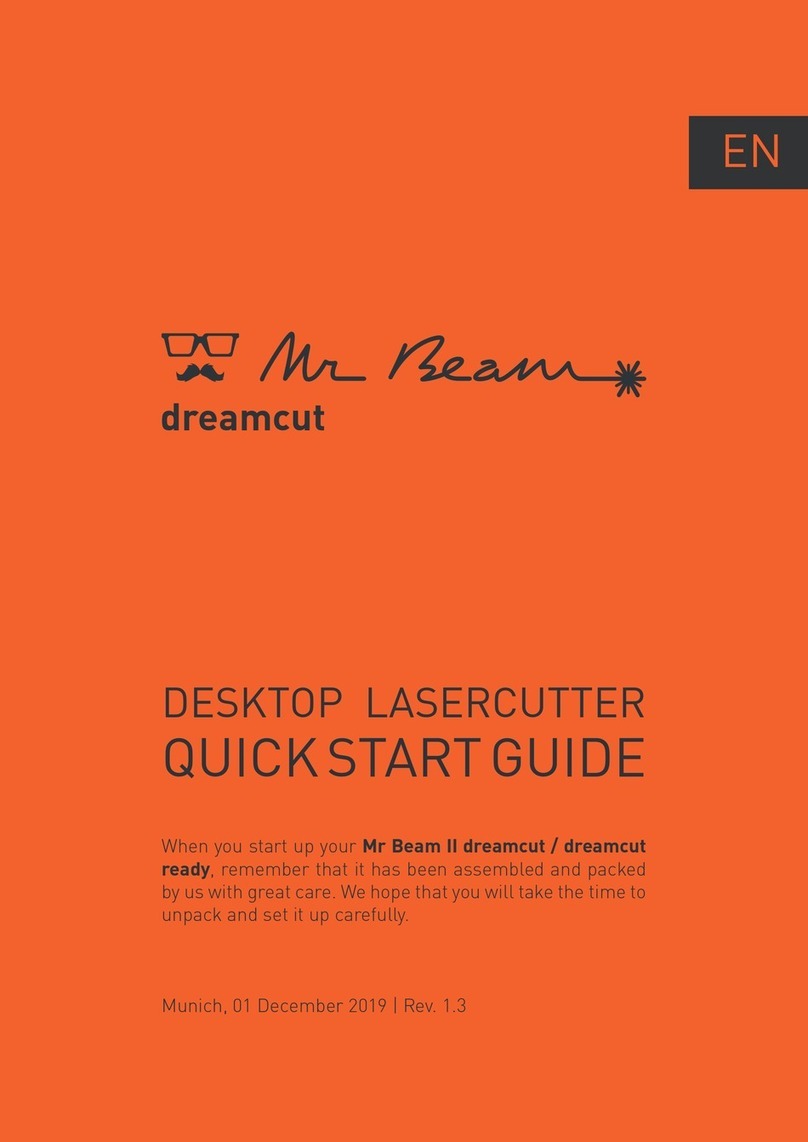
Mr Beam
Mr Beam II dreamcut ready quick start guide
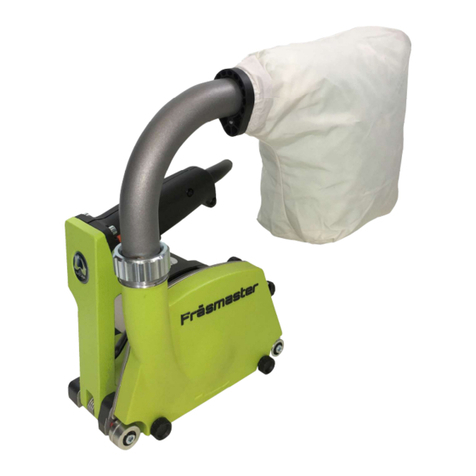
WOLFF
WOLFF FRASMASTER 230 V Translation of the original instruction
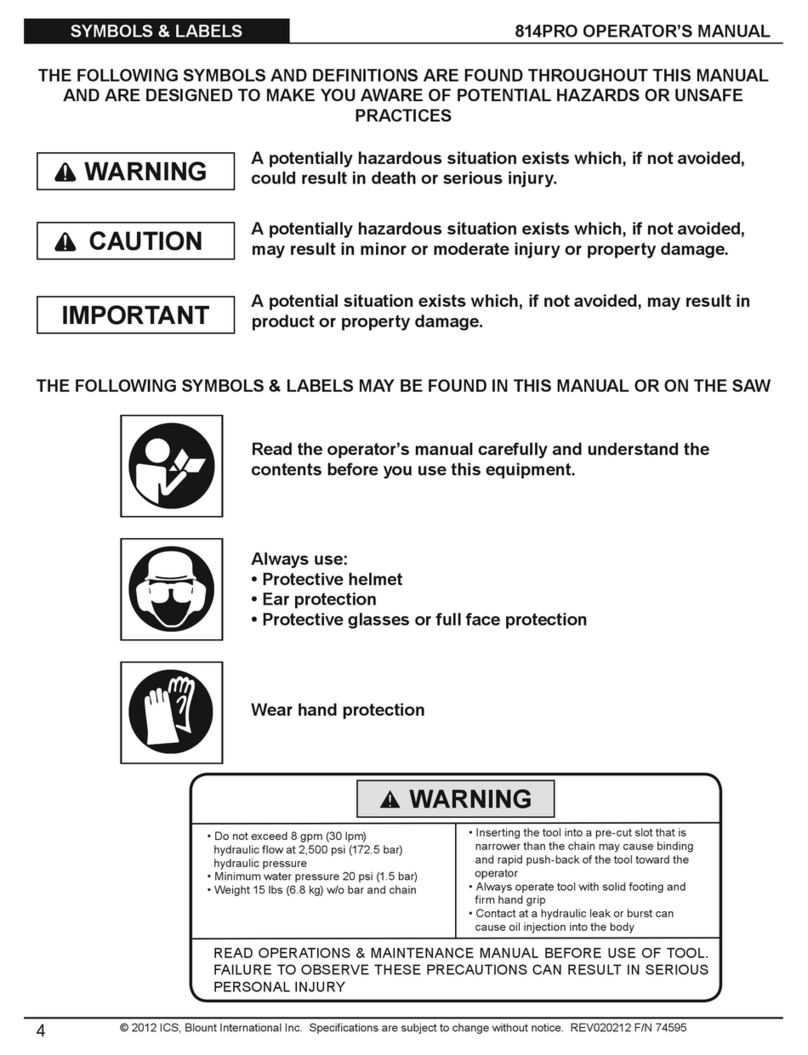
ICS
ICS SpeedHook 814PRO Operator's manual
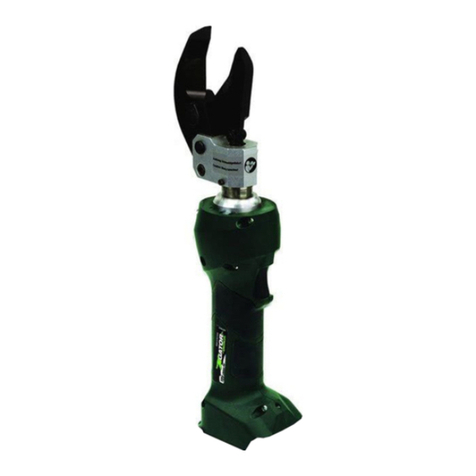
Textron
Textron Greenlee Gator ES20L Operation manual
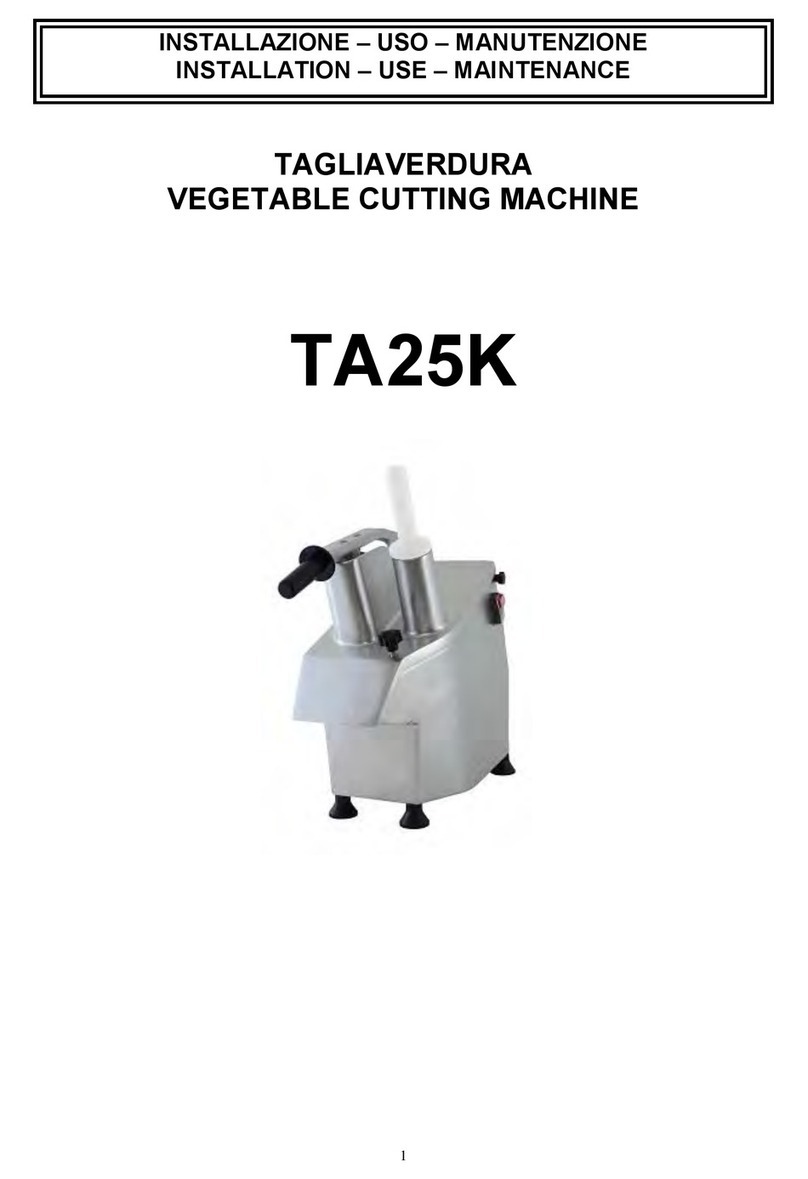
Gastrodomus
Gastrodomus TA25K Installation, use and maintenance
